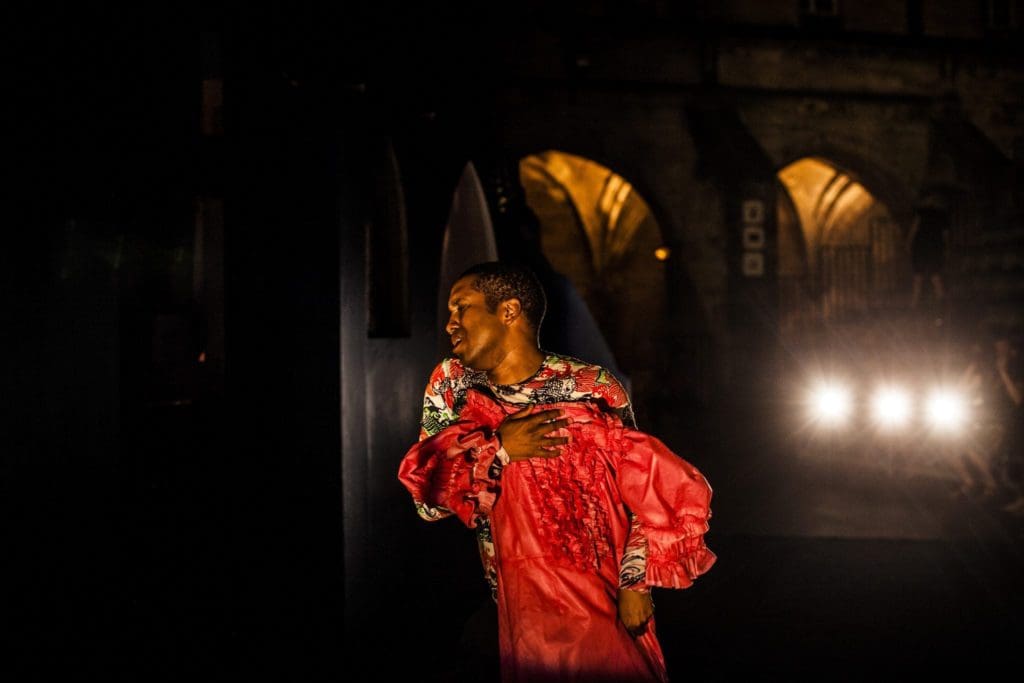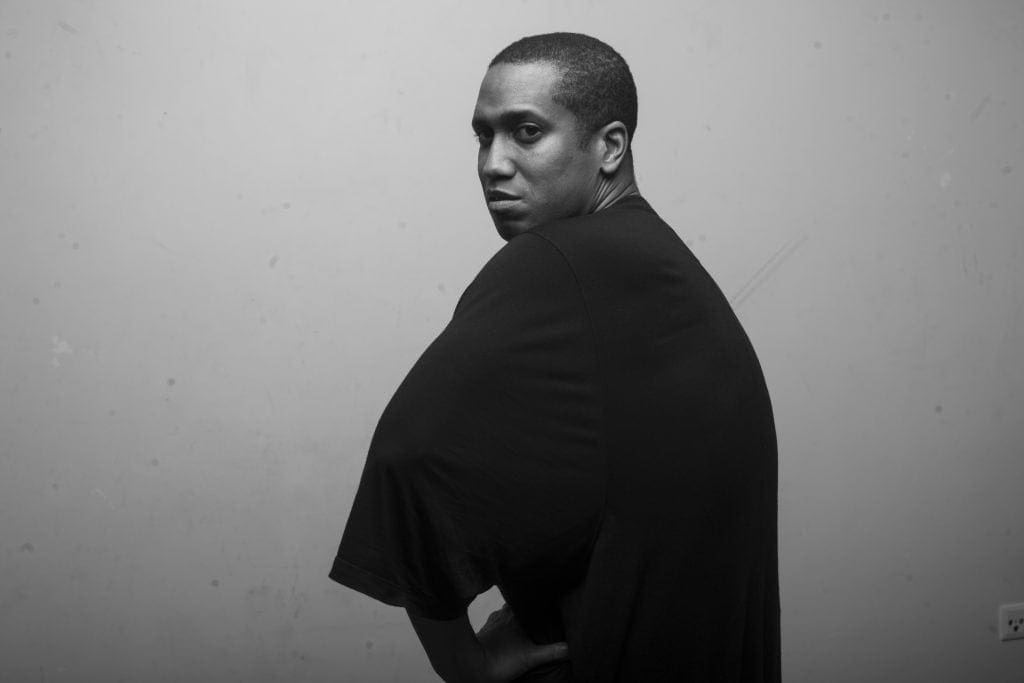Steamy Nights On the Plains: An Interview with Trajal Harrell on Caen Amour
Trajal Harrell is a dancer and choreographer who uses history to inform the contemporary dance he creates. Known for the series Twenty Looks or Paris is Burning at the Judson Church, parts of which were performed in the 2014 Fringe Festival, Harrell recently completed a two-year residency at MoMA, where he turned his attention to butoh, a form of Japanese dance theater. That study informs his entry into the 2018 Fringe Festival, Caen Amour, a new work that draws inspiration from dance styles of the near and distant past. Harrell gives viewers a look into the hoochie-coochie shows of the early 20th-century, positing that perhaps this early form of erotic dance served as an origin of dance as a modern artform. His piece, which premiered at the Festival Avignon in 2016, is an invitation into a historical imagination, Harrell’s vision of the exoticized, orientalist peep shows that drew in crowds a century ago. FringeArts talked to Harrell about his historical influences and the different styles that all exist in this innovative dance work.
FringeArts: Do you remember how you decided upon the title Caen Amour? Do you remember where you were when you decided upon it?
Trajal Harrell: I don’t remember where I was but the title was an attempt at a cheesy title for a hoochie-coochie show. Another, for example, could have been “Steamy Nights on the Plains.” In the case of Caen Amour, the title is a mix of the city Caen, France, and the word for love in French. Because of my touring schedule, Caen is the place I’ve spent the longest consecutive time since 2009. It’s still reigning. Also, Caen Amour when you say it could almost sound like “quand amour” which means “when love?”
FringeArts: Twenty Looks or Paris is Burning at the Judson Church fused voguing and post-modern dance, among other forms. What are some of the performance “forms” and inspirations you contemplate and play with in Caen Amour?
Trajal Harrell: I wouldn’t say my work deals with fusion. I resist blending different dance forms. I’m more interested in looking at the theoretical ideas underpinning forms and the historical tensions between them. This informs an imaginary process rather than a blending of different movement styles. Caen Amour is part of a long-term research where I attempt to look at butoh [a form of Japanese dance theater] through the theoretical lens of voguing and early modern dance through the theoretical lens of butoh.
FringeArts: What is hoochie-coochie and what do you find intriguing about it?
Trajal Harrell: I see a direct line between hoochie-coochie and early modern dance. Both are connected to the burgeoning form of artistic dance at the beginning of the 20th century and the fascination during that era with “orientalism.” The hoochie-coochie was supposedly a bastardized form of dance shows that were trying to copy the moves of the Syrian dancer Little Egypt who had danced at the Chicago World’s Fair in 1893. Those offsprings developed in various manners and traveled across the U.S., and my father went to shows when the fair come to my small town where I grew up. We never talked about it, but from my time as a little boy, I saw him going into the tent of the hoochie-coochie shows. As I become older, I realized he was going to watch naked ladies dancing. So, this is my first real understanding of dance as a spectacle.
FringeArts: What do you look for in the dancers you work with?
Trajal Harrell: They have to want to be seen. They have to love “servin’ it,” as they say in the voguing dance tradition.
FringeArts: Your work is known for its deep grounding in academic dance and dance history. How did that inform your conversations with your dancers during rehearsal?
Trajal Harrell: My work now is related to early modern dance and butoh, and theoretical ideas from voguing. None of those forms are academic dance nor are they widely taught in the academy. Modern dance but not early modern dance. That said, we are making contemporary dance. The work is grounded in research in archives, texts, art, culture, conversations, and experiences. In terms of the history, we spoke a lot about critiquing “orientalism” and also the notion of dance before it knows of itself as a dance, the artform.
FringeArts: What is the role of the audience in your piece?
Trajal Harrell: The work always gravitates towards togetherness. The choreography is not just what you look at, but how the dance relates to the audience and their movements watching. This is quite explicit in Caen Amour, but the audience doesn’t need to know anything before coming to the performance. We give them all the information they will need during the performance.
— Alyssa Kerper and Christopher Munden
What: Caen Amour
When: September 13 – 15, 2018
Where: FringeArts, 140 North Columbus Boulevard
Cost: $35 (general); $24.50 (member); $15 (students + 25-and-under)
Created by Trajal Harrell
https://fringearts.com/event/caen-amour



